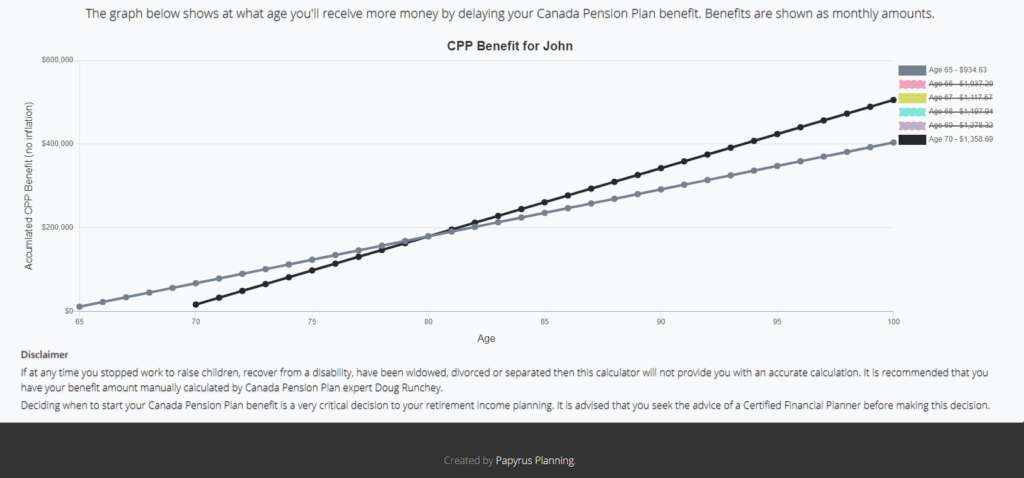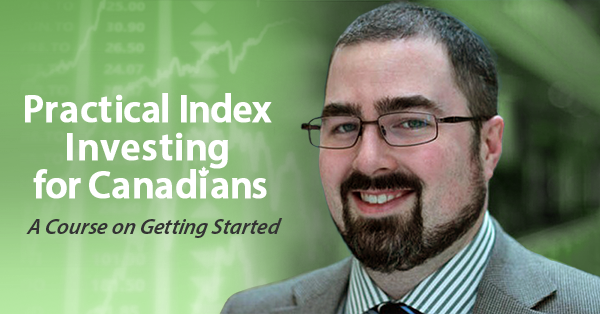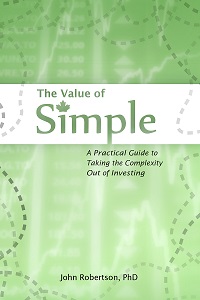Passiv is a neat tool that helps you manage your portfolio. It plugs into your Questrade account, and can send you email notifications when new money arrives in your account, and can even do one-click rebalancing of your portfolio, either by just distributing un-invested cash to the parts of your portfolio that are under-weight, or by also selling parts that are over-weight.
I should mention that they now have a referral program and I’m part of that — you can find a link over in the sidebar where the advertisey stuff goes.
So they recently put up a blog post comparing the costs of all-in-one ETFs to unbundling them and investing in the handful of underlying funds. Usually you’d also have to consider and weight the extra work and complexity that goes along with the savings of unbundling, but the pitch is that Passiv can manage the rebalancing and multiple purchases for you, so it should just come down to cost.
I’m a big fan of the all-in-one ETFs, in part because they force you to look at your portfolio as a whole, on top of the convenience factor. Even with no rebalancing to do, you can still make use of Passiv to do the purchases for you with one click, and send those emails when new money arrives in your account. And for the moment those services are free to the user.
But if you want to get the lowest possible costs, then sure, you can save a bit by investing in a set of individual ETFs. However, the comparison in the post is missing a few important factors. Yes, you will pay a slight MER premium for the convenience of an all-in-one fund. But that doesn’t mean you should automatically break them apart to seize those savings, even with Passiv to help. Also, the MER premium is a bit smaller than their post makes out — only about 8 bp.
Commission Costs
First off, the article completely ignores transaction costs. While ETFs are nearly free to buy at Questrade, you do have to pay to sell an ETF. And if you’re manually rebalancing, you may sometimes have to do that, especially once your portfolio gets large enough to be hard to rebalance from regular contributions making purchases only.
If you have 3 holdings to sell every 6 months, that’s just $30/yr in commissions, which doesn’t sound like much. But with just 8 bps of savings on the table, you’d need at least $37k invested to break-even. That same comparison also shows how little the convenience of the all-in-one funds costs for smaller portfolios — $30/yr for the convenience on a 5-figure portfolio.
Ok, that’s not a high bar, and below that point you’re almost certainly going to be able to rebalance with new cash rather than having to sell something first anyway. But still, it’s worth pointing out if you are considering using multiple ETFs.
US Funds Complication
A mistake in Passiv’s blog post is comparing a Canadian product to a mix of Canadian and American funds. For example, in saying that you can save 13 bp by breaking apart VGRO, the blog post is putting an allocation toward VTI, the American-listed ETF; similarly for breaking apart the iShares funds, the author is looking at several US-listed funds, which would be more expensive on the Canadian side (ITOT, IMEG) or have no exact analog (USIG, GOVT). But those currency exchanges are going to be tricky (and potentially costly) to handle, and those costs aren’t included in the comparison. Using a Canadian-listed fund would make for a fairer comparison. VUN, for example, rather than VTI. The Canadian versions carry MERs that are a bit higher, reducing the benefit for breaking up VGRO to just 8 bp.
What About Quantization?
Take a look at XGRO’s allocation (which I’m pulling from their post rather than double-checking with iShares myself). It has two components with just a 2% weighting, and then a 3% and 3.9% allocation. Will there be an issue trying to actually hit those small targets, especially if the underlying ETFs can only be purchased in whole units costing say $80 each when trying to invest on your own?
I thought this quantization issue might also be a factor in the decision of whether to break up all-in-one funds, particularly for smaller accounts. While I can really cherry pick and say that if you have $18k, you can’t get within 10% of a 2% weighting with a fund that costs $80 CAD (USIG for example) — 5 shares would be 2.22%, while 4 shares would be 1.78%. I don’t know how Passiv would handle that if you had your rebalancing threshold set at 10% or tighter, would it keep flipping back and forth, buying and selling a share to try to hit an unachievable target allocation? But for the most part, quantization isn’t really a real-world argument for sticking with all-in-one funds. You’re unlikely to run into any issues with it, especially if you’re willing to increase your rebalancing threshold until your portfolio grows larger.
But concerns about buying very small amounts of these funds that the all-in-one ETFs happen to use could lead to a bit of analysis paralysis: should you blindly follow what they have done, or use a 3- or 4-fund canonical portfolio instead?
Summary
I’ve been telling people how to invest in a canonical portfolio for years, and I’m a big fan of the all-in-one ETFs. If you want to save a bit of money and use separate ETFs, be my guest, especially if you have a 6-figure portfolio where the minor cost savings may be worth the extra bit of effort. If you want to use Passiv to help you do that, that’s great. But I don’t like the post’s insinuation that all-in-one funds are costing that much (by framing the extra costs as a percentage difference off a very low base cost) or are “less than ideal”. It ignores the other benefits of simplification (such as better behaviour), and it over-states the benefit by ignoring commissions and currency conversion costs.





 Questrade: use QPass 356624159378948
Questrade: use QPass 356624159378948 Passiv is a tool that can connect to your Questrade account and make it easier to track and rebalance your portfolio, including the ability to make one-click trades.
Passiv is a tool that can connect to your Questrade account and make it easier to track and rebalance your portfolio, including the ability to make one-click trades.